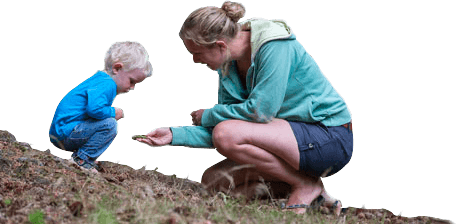The New Forest boasts an impressive array of uncommon and special butterfly species. Being...
Best places to spot wildlife
The New Forest is globally important for wildlife across a landscape covering over 200 square miles. Wherever you go you are likely to see many different types of plants, trees, insects and birds.
To see the widest variety of species, you should spend time in different habitats, including coastal locations. Ideally, return at different times of year because many species are seasonal. Some only come out at night and others are best seen early in the morning.
Below you’ll find a small selection of places and links to other websites where you can get further information.
Our wildlife pages will also help you learn what to look for. Finally, it’s worth checking if there are any events focussing on wildlife.
Lymington-Keyhaven Nature Reserve
A six-mile length of coastal grazing marshes, fresh and saltwater lagoons and saltmarsh – with fabulous views across the Solent to the Isle of Wight. It is nationally important for its plants, insects and birdlife, including the curlew, little egret and Dartford warbler.
Famous for its herd of fallow deer, there’s a deer viewing platform overlooking the field where they can usually be spotted. There’s also a handy information centre on site.
In the heart of the New Forest, Pondhead contains the largest remaining area of hazel coppice on the Crown lands. Its wide rides are great for spotting butterflies and in the summer the inclosure is covered by a sea of bluebells.
All six of the native reptile species can be viewed at Forestry England’s New Forest Reptile Centre, which is open from 10am – 4.30pm between April and September.
Visit the New Forest Wildlife Park and discover more about conservation and the fascinating animals living there. From owls and otters to European polecats and Scottish wildcats, there’s a whole range of animals to see.
Managed by Hampshire County Council, Lepe Country Park is part of the North Solent National Nature Reserve. Its wildflower meadows attract many species of insects and the nearby river and sea entice many water and song-birds.
The National Trust protects over 1,330 hectares (3,300 acres) of land in the New Forest – made up of the Commons of Bramshaw, Ibsley, Rockford, High Town, and Hale Purlieu. Those in the north of the Forest are particularly good for heathland and woodland wildlife, including birds of prey and nightjars.
More New Forest Spotting wildlife
Some of the best places to spot wildlife in the New Forest.
Newsletter
6
Free
Six free walking routes when you sign up for New Forest Newsletter

